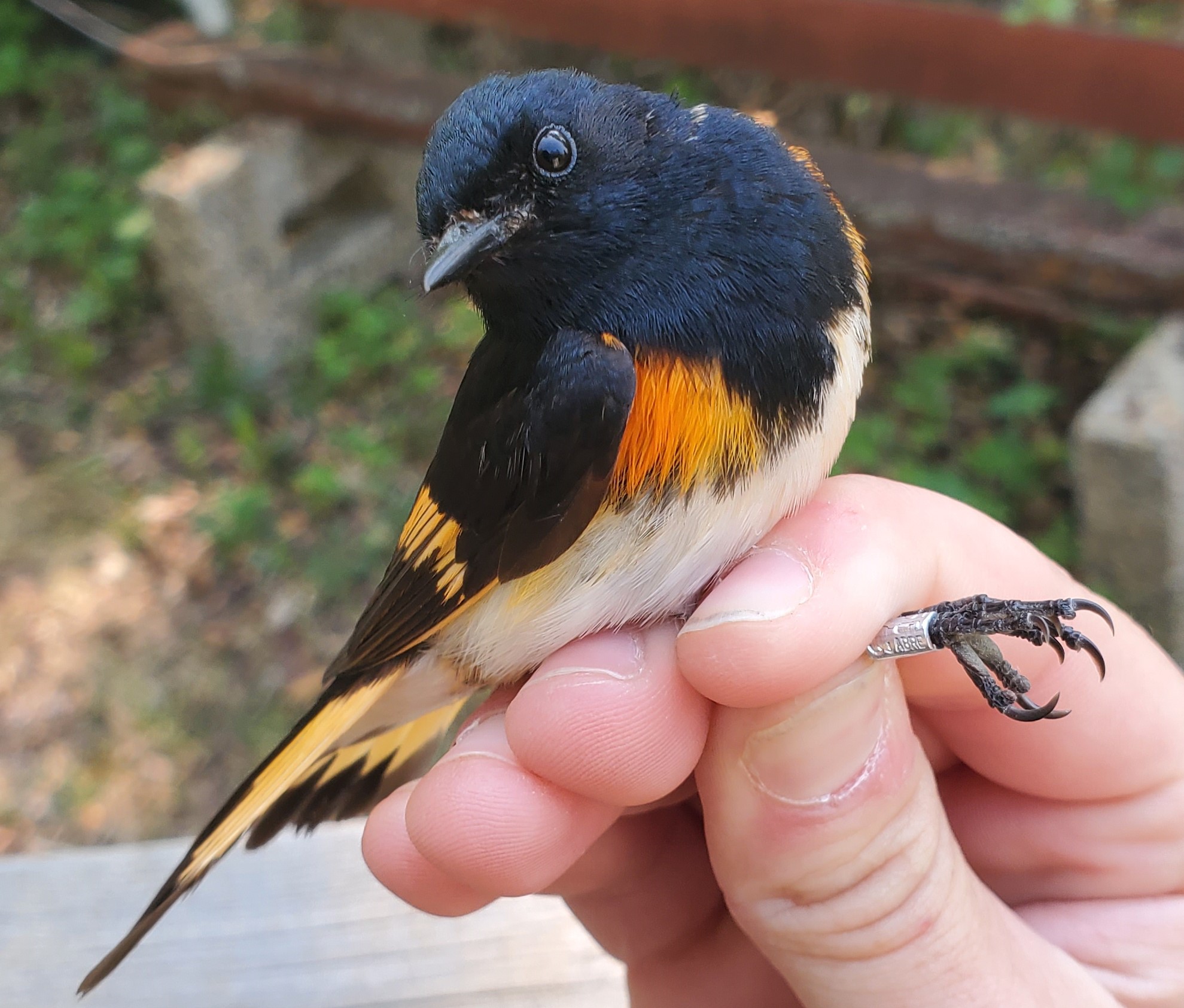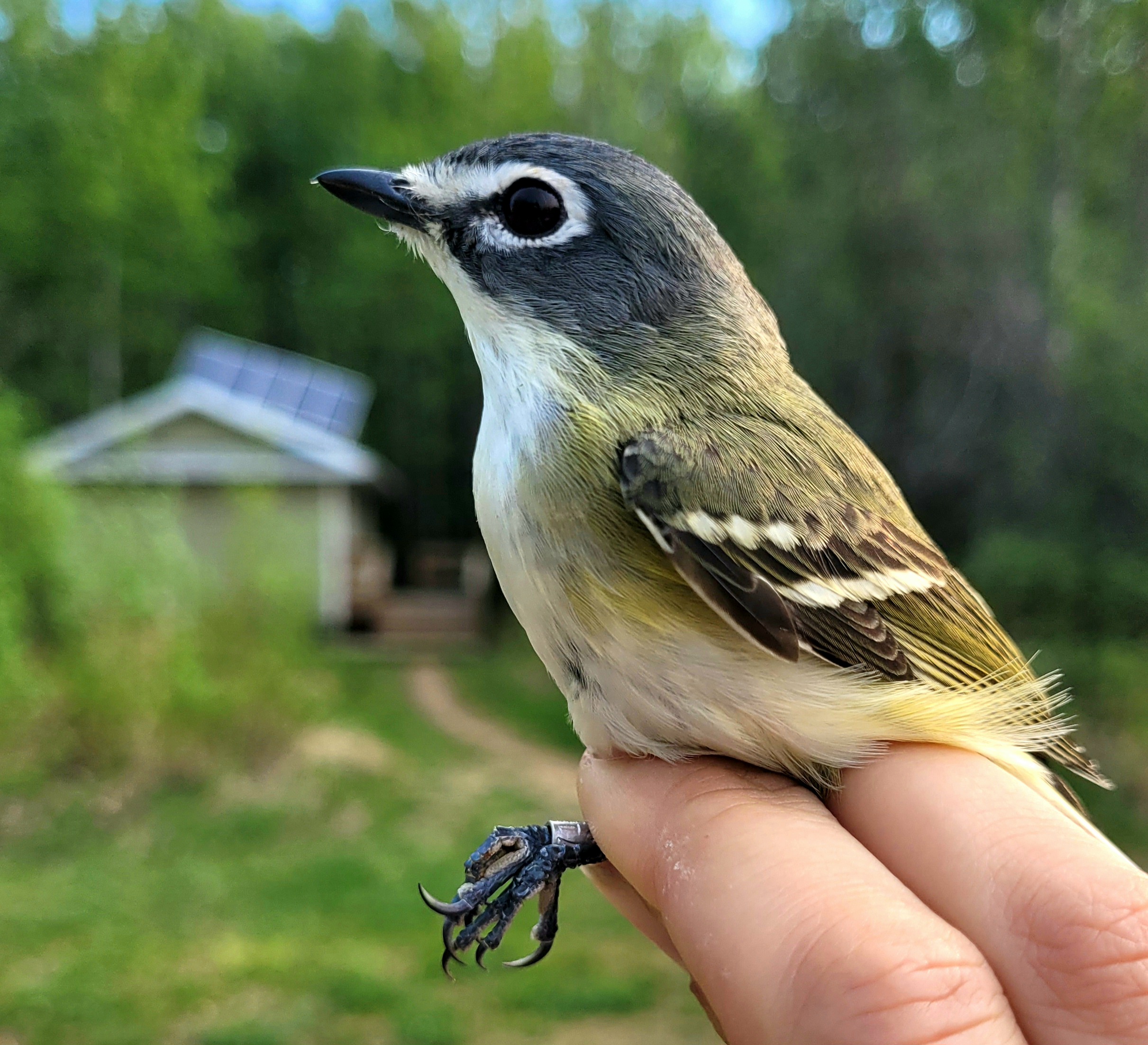Many of our locally breeding migratory bird species were detected for the first time this past week. These species included Blue-headed Vireos, Least Flycatchers, Rose-breasted Grosbeak, Western Tanagers (our mascot), Swainson’s Thrushes, Magnolia Warblers, Tennessee Warblers, and Ovenbirds. We are excited to hear a diversity of warblers’ songs joining in with the local sparrows and robins, but overall things have been unusually slow and a little quiet.
Most of these new arrivals are long-distance migrants. These birds are travelling all the way from Central and South America to breed in the boreal forest. Their migrations seem to be triggered by changes in day length on their wintering grounds. Since day length fluctuates predictably year to year, long-distance migrants’ departure dates from their southern wintering grounds and their arrival dates locally tend to be roughly consistent between years.

Above: American Redstarts are just starting to move through. They are long-distance migrants spending their winters from southern Mexico and Cuba down into Brazil and Peru.
Meanwhile most of our short-distance breeders have arrived and are showing signs of active breeding efforts and early migrants have already left for their breeding grounds. These species come from the southern USA and northern Mexico and they seem to depend on changes in the weather to trigger their migrations. They migrate gradually waiting for warmer weather at each stop before making another push north. With the exceptionally hot weather, their migrations have already completed. Unlike our more predictable long-distance migrants, short-distance migrants have a large range of dates that we see the last (or first) of them.
Since short-distance migrants can adapt their migration schedule to weather conditions, they may be able to adapt to climate change. There is concern, however, for our long-distance migrants – those pretty warblers and gifted singers that add diversity to our boreal forest in the summer.

Above: Blue-headed Vireos have been plentiful this week. They are short-to-medium distance migrants that spend their winter as near as Florida or as far as Nicaragua. They are normally our first Vireo to arrive.
Despite the lack of rain, our trees and shrubs are well leafed out and the saskatoons are already in bloom. When we compare photos of our station between years, we see that this year’s green up is three weeks earlier than last year’s. These plants are food for bugs and bugs are food for most of our songbirds. It is possible that the shift in leaf growth timing may lead to a shift in timing of peak insect abundances. This might not impact our short-distance migrants much, but our long-distance migrants may find themselves with little insect food for their young. Long-distance migrants do not know they are late to the game and cannot adjust their migrations much. To quantify trends in both leaf-out and insect abundances, we are continuing our Caterpillars Counts contributions by doing standardized insect surveys roughly every 10 days.
By the time this is published, Team Tanager will have finished our Great Canadian Birdathon run. This is a big day of birding where we attempt to see as many species as possible within 24 hours to fundraise for the LSLBO and bird conservation efforts across Canada. Team Birders in the Park will be completing their big day this weekend. If you like what we do, please consider donating and stay tuned for our results next week.
By Robyn Perkins, LSLBO Bander-in-Charge
